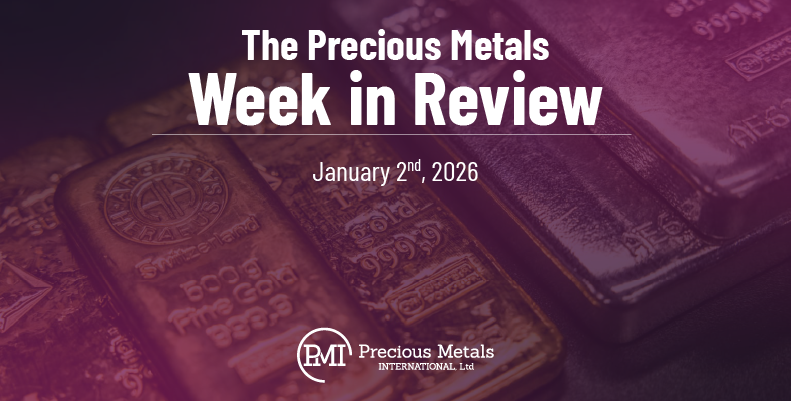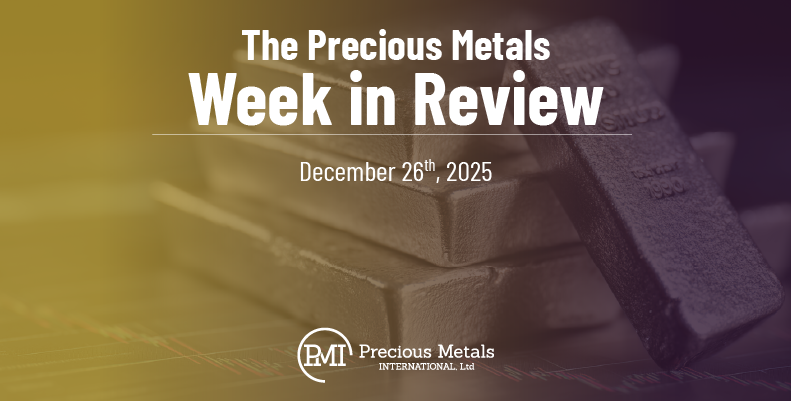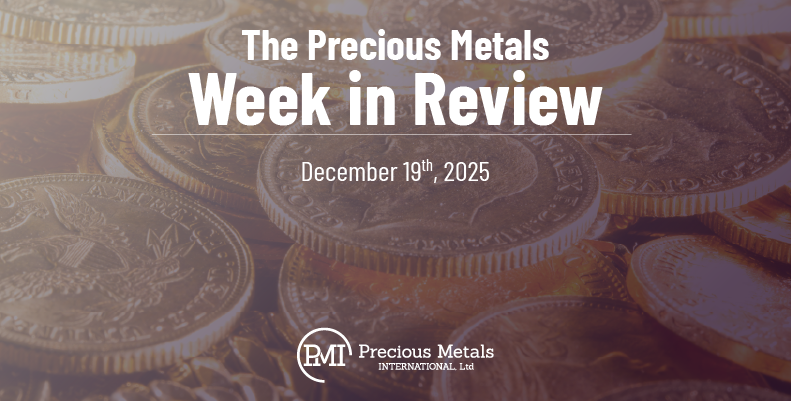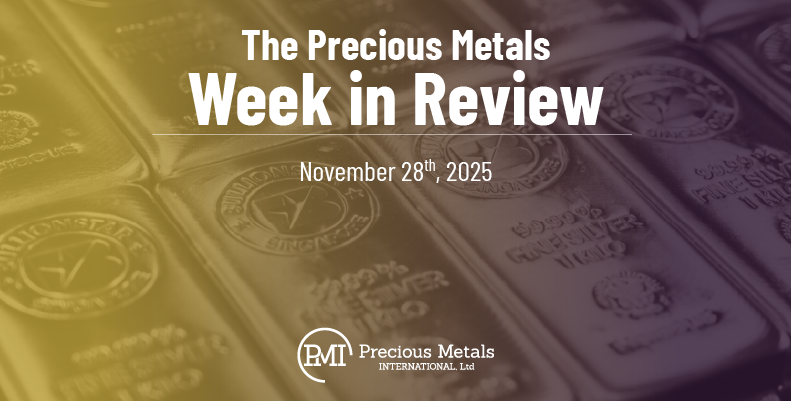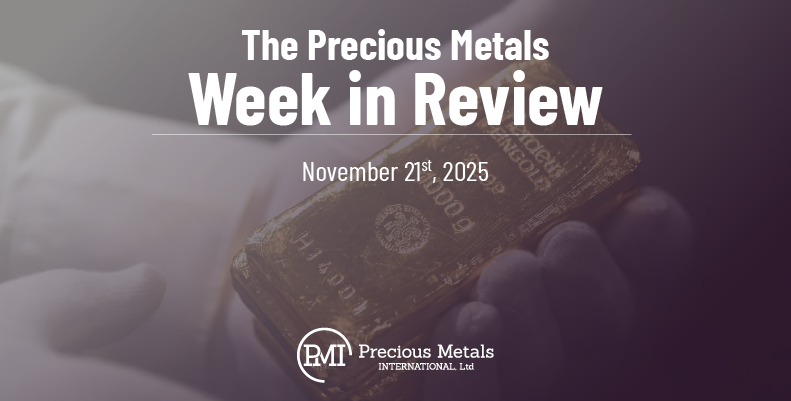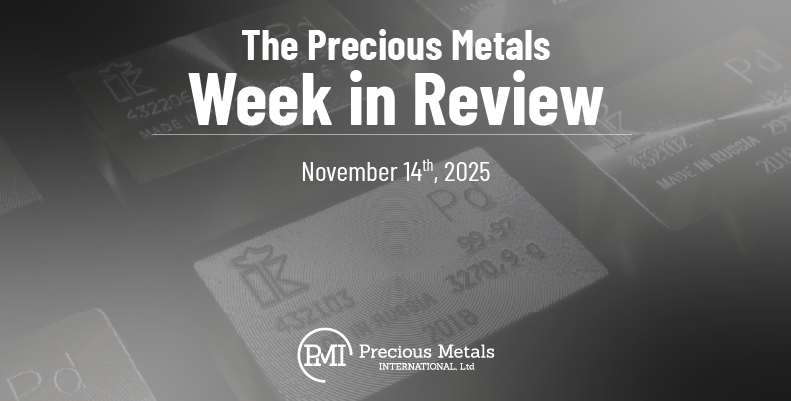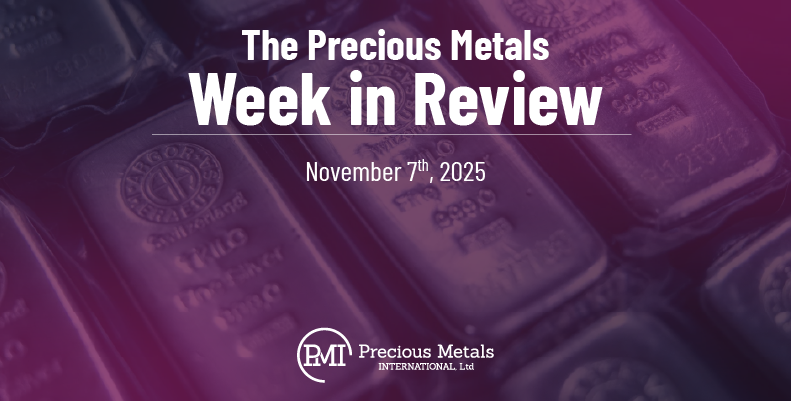Precious metals are gaining renewed momentum as market volatility, geopolitical tensions, and inflation concerns reshape the 2026 investment landscape. Gold and silver are rallying on safe-haven demand, while platinum and palladium benefit from tightening supply and resilient industrial demand. With equities, currencies, and energy markets facing uncertainty, many investors are turning to physical precious metals as long-term portfolio stabilizers and inflation hedges.
The Precious Metals Week in Review – January 2nd, 2026
1. Silver and gold futures fell sharply on Monday after the Chicago Mercantile Exchange, one of the world’s largest trading floors for commodities, asked traders to put up more cash to make bets on precious metals with prices surging this year. This year, gold futures are up 65%, and silver has more than doubled. Exchanges…
The Precious Metals Week in Review – December 26th, 2025
Gold and silver are posting their strongest performance in more than four decades as geopolitical tensions, expectations of interest rate cuts, and sustained central bank buying push prices to historic highs. Gold has surged past $4,500 per ounce, while silver has climbed above $70, driven by strong industrial demand and physical supply constraints. With volatility elevated across global markets, investors continue to turn to physical precious metals as a long-term hedge against inflation, currency risk, and economic uncertainty. Analysts remain structurally bullish, with forecasts pointing to even higher prices as diversification demand accelerates.
The Precious Metals Week in Review – December 19th, 2025
Precious metals continue to outperform as easing inflation, central bank buying, and geopolitical tensions fuel demand for safe-haven assets. Gold is trading near record highs after surging more than 60% this year, marking its strongest annual performance since 1979, while silver and platinum have reached multi-year and historic peaks. As investors reassess equities, currencies, and government debt amid economic uncertainty and shifting monetary policy expectations, physical precious metals are increasingly viewed as a critical tool for long-term wealth preservation and portfolio diversification.
The Precious Metals Week in Review – December 12th, 2025
Gold and silver are leading the precious metals rally as Federal Reserve rate cuts, rising volatility, and persistent inflation reshape investor strategy. Silver has surged to record highs on strong physical demand and ETF inflows, while gold continues its historic run, supported by central bank buying and global economic uncertainty. As markets head into 2026, many investors are turning to physical precious metals as a long-term hedge against inflation, currency risk, and financial market instability.
The Precious Metals Week in Review – December 5th, 2025
1. U.S. stocks sank on Monday while Bitcoin’s slump deepened, as Wall Street’s strong late-November rebound looked set to hit a speed bump on the first trading day of December. Tech led the retreat, with the Nasdaq Composite down by around 1% and the S&P 500 dropping roughly 0.7%. The Dow Jones Industrial Average slid…
The Precious Metals Week in Review – November 28th, 2025
Silver has smashed its all-time record as global inventories tighten and borrowing costs climb, while gold continues its powerful ascent fueled by central bank demand and investor anxiety. This article breaks down the turbulence shaking precious metals markets and why more investors are turning to physical assets for protection.
The Precious Metals Week in Review – November 21st, 2025
As economic uncertainty grows and markets brace for volatility, more investors are turning to precious metals for stability. Gold faces short-term pressure from shifting rate-cut expectations, yet remains a vital hedge against inflation, market bubbles, and weakening confidence in broader financial assets. Amid fragile sentiment across stocks, crypto, and global currencies, precious metals continue to play a central role in long-term portfolio protection.
The Precious Metals Week in Review – November 14th, 2025
Gold and silver prices are surging as economic uncertainty and a potential U.S. gold revaluation drive investors toward precious metals. Analysts warn that continued volatility, government debt, and shifting monetary policy make physical gold and silver critical long-term hedges. With gold pushing toward record highs and silver threatening a breakout above $50, precious metals are once again proving their safe-haven power.
The Precious Metals Week in Review – November 7th, 2025
Gold prices remain resilient near $3,970 as global markets show signs of instability and investors turn toward safe-haven assets. Despite stock market volatility, precious metals like gold and silver continue to demonstrate their strength as long-term hedges against inflation and uncertainty. With analysts anticipating ongoing economic turbulence, diversification through physical gold and silver remains a key strategy for protecting wealth and preserving purchasing power.


